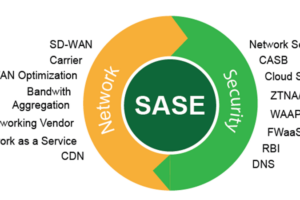In the dynamic realm of information technology, acquiring the right certifications can significantly propel your career forward. Among these certifications, the CompTIA A+ certification stands out as a fundamental credential for individuals seeking entry-level IT positions or aiming to validate their foundational IT knowledge. This guide offers an in-depth exploration of the significance of CompTIA A+ certification, what the certification encompasses, the training process involved, and the valuable career opportunities it unlocks.
Understanding CompTIA A+ Certification
What is CompTIA A+?
CompTIA A+ is an industry-recognized certification that validates the essential skills and knowledge required for entry-level IT professionals. The certification is vendor-neutral, meaning it covers a broad spectrum of IT concepts and technologies, ensuring a comprehensive understanding of various hardware and software components.
Core Concepts of CompTIA A+
Hardware Fundamentals: Candidates learn about computer hardware components, their functionalities, and troubleshooting techniques.
Software Basics: Understanding operating systems, software installation, configuration, and system maintenance.
Networking Fundamentals: Basic networking concepts, protocols, configurations, and troubleshooting common network issues.
Security Fundamentals: Foundational knowledge of security concepts, threats, vulnerabilities, and best practices.
Troubleshooting Techniques: Problem-solving methodologies and techniques for resolving hardware, software, and network issues.
Significance of CompTIA A+ Certification
Entry into IT Industry
CompTIA A+ serves as a gateway for beginners looking to enter the IT industry. It provides a strong foundation of knowledge essential for starting a career in IT support or related roles.
Vendor-Neutral Credential
Being vendor-neutral, CompTIA A+ certification equips professionals with broad IT knowledge, making them adaptable to various technology environments and vendor-specific systems.
Industry Recognition
Employers globally recognize and value CompTIA A+ certification, viewing it as a validation of an individual’s competency in essential IT skills.
Career Advancement Opportunities
Certified professionals can pursue roles such as IT support specialist, field service technician, desktop support analyst, or help desk technician, opening doors to a wide array of entry-level IT positions.
Foundational Knowledge
The certification offers a comprehensive understanding of fundamental IT concepts, providing a solid base for pursuing advanced certifications in specific IT domains.
CompTIA A+ Certification Training Components
Exam Preparation Materials
Official CompTIA A+ Study Guides: Detailed resources covering exam objectives, practice questions, and hands-on exercises.
Online Courses and Training Modules: Interactive online courses and video tutorials designed to complement study materials.
Practice Exams: Mock exams to simulate the actual certification test environment and assess readiness.
Hands-On Labs: Practical exercises allowing candidates to apply theoretical knowledge in real-world scenarios.
Steps to Obtain CompTIA A+ Certification
Exam Registration: Register for the CompTIA A+ certification exams (Core 1: 220-1001 and Core 2: 220-1002) through the CompTIA website.
Study and Preparation: Utilize study materials, online courses, and practice exams to prepare thoroughly for the certification exams.
Exam Scheduling: Schedule the certification exams at an authorized testing center.
Take the Exams: Sit for the CompTIA A+ Core 1 and Core 2 exams, demonstrating your knowledge and skills in IT fundamentals.
Receive CompTIA A+ Certification: Upon successfully passing both exams, you will be awarded the CompTIA A+ certification, validating your foundational IT expertise.
CompTIA A+ Certification Renewal
CompTIA A+ certification is valid for three years from the date of certification. To maintain certification, professionals can renew by earning Continuing Education Units (CEUs) through additional training or by passing the latest CompTIA A+ exams.
Advantages of CompTIA A+ Certification
Entry-Level Career Opportunities
CompTIA A+ opens doors to entry-level IT positions, providing a launchpad for a successful career in information technology.
Versatile IT Knowledge
The certification covers a wide range of IT concepts, making certified individuals adaptable to various technology environments.
Industry Recognition
Employers value CompTIA A+ certification, viewing it as proof of a candidate’s foundational IT knowledge and skills.
Building Blocks for Advanced Certifications
CompTIA A+ serves as a stepping stone for pursuing more advanced IT certifications, laying a strong foundation for career growth.
Practical Skills Development
The hands-on nature of the certification training equips candidates with practical problem-solving skills crucial for IT roles.
Challenges and Considerations
Exam Rigor
The CompTIA A+ certification exams demand a comprehensive understanding of various IT domains, requiring dedicated study and preparation.
Continuous Learning
Maintaining the certification requires ongoing learning and renewal through additional training or passing the latest CompTIA A+ exams.
Rapidly Evolving Technology
The IT industry evolves rapidly; hence, certified professionals need to stay updated with the latest technological advancements.
Conclusion
CompTIA A+ certification is a pivotal milestone in an IT professional’s career journey, Sprintzeal offering a solid foundation in fundamental IT concepts. It opens doors to diverse entry-level IT roles, providing a platform for career growth and advancement. The certification’s vendor-neutral nature, industry recognition, and practical skill development make it a valuable asset in the ever-evolving landscape of information technology.
Embark on the path of CompTIA A+ certification training, unlock foundational IT knowledge, and step confidently into the dynamic world of information technology.










